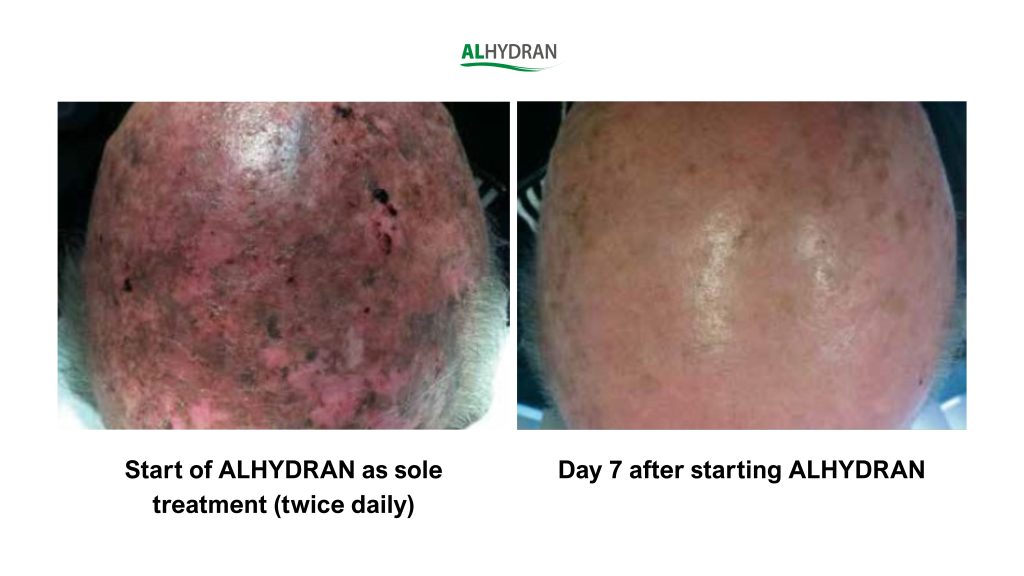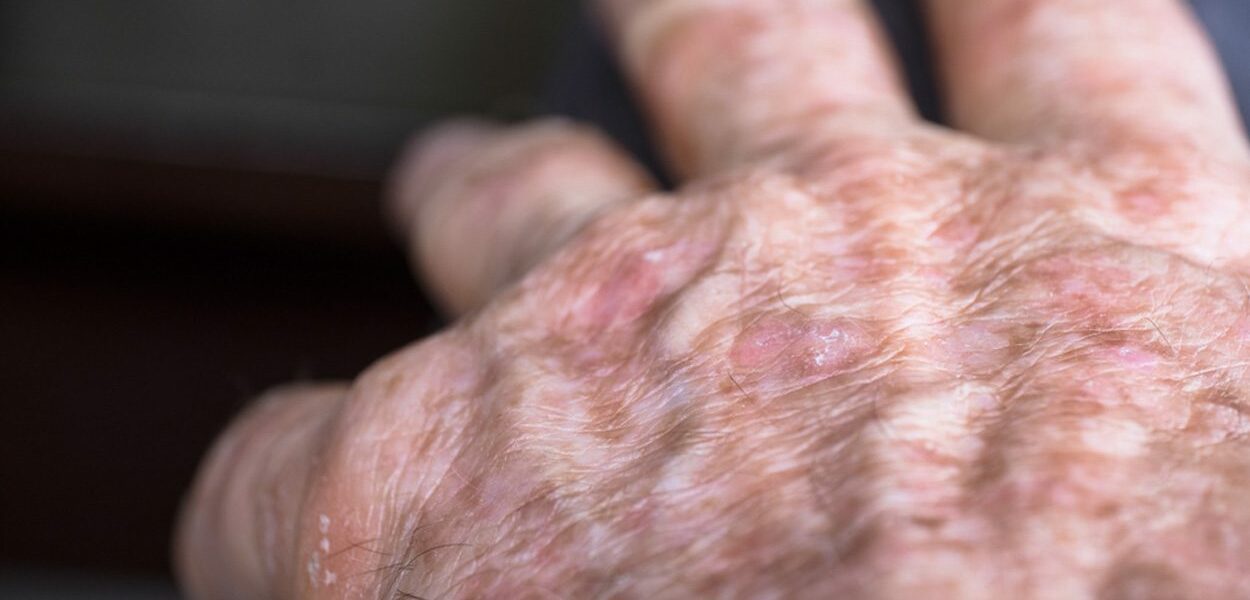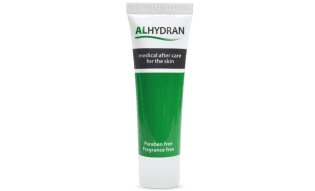Actinic keratosis aftercare with a cream
Actinic keratosis is considered as a precursor to skin cancer. If detected, it is important to consult a GP immediately, who will recommend the appropriate treatment. Most therapies can be harsh on the skin, particularly cryotherapy (liquid nitrogen), photodynamic therapy (PDT), curettage (scraping), and chemical peels. In some cases, actinic keratoses may need to be surgically removed.
Skin problems following actinic keratosis treatment
However, the treatment themselves can damage the skin. Without effective aftercare, you may experience skin issues such as:
- Dryness
- Itching and irritation
- Redness
Using a high-quality cream can help relieve or even prevent these skin problems.
Aftercare following treatment for actinic keratosis: ALHYDRAN cream
ALHYDRAN offers everything your skin needs for effective aftercare. Applying the cream three times a day is sufficient. For more information, see our instructions for use.
ALHYDRAN helps damaged skin to:
- Is sufficiently hydrated
- Retains introduced moisture
- Regains and retains its flexibility
Visual evidence of skin improvement before and after ALHYDRAN application

Patient 1: actinic keratosis scalp treatment before and after

Patient 2: actinic keratosis scalp treatment before and after
Hydration is key to preventing discomfort. While healthy skin can hold onto moisture, damaged skin often loses this ability. ALHYDRAN restores the skin’s moisture barrier, supporting its natural healing process.
The result? Skin issues like dryness and itching quickly subside. Dozens of satisfied user experiences confirm this.


